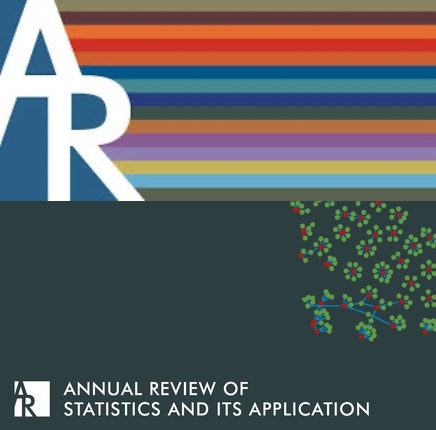Excess Mortality Estimation
IF 8.7
1区 数学
Q1 MATHEMATICS, INTERDISCIPLINARY APPLICATIONS
Annual Review of Statistics and Its Application
Pub Date : 2024-11-12
DOI:10.1146/annurev-statistics-112723-034236
引用次数: 0
Abstract
Estimating the mortality associated with a specific mortality crisis event (for example, a pandemic, natural disaster, or conflict) is clearly an important public health undertaking. In many situations, deaths may be directly or indirectly attributable to the mortality crisis event, and both contributions may be of interest. The totality of the mortality impact on the population (direct and indirect deaths) includes the knock-on effects of the event, such as a breakdown of the health care system, or increased mortality due to shortages of resources. Unfortunately, estimating the deaths directly attributable to the event is frequently problematic. Hence, the excess mortality, defined as the difference between the observed mortality and that which would have occurred in the absence of the crisis event, is an estimation target. If the region of interest contains a functioning vital registration system, so that the mortality is fully observed and reliable, then the only modeling required is to produce the expected deaths counts, but this is a nontrivial exercise. In low- and middle-income countries it is common for there to be incomplete (or nonexistent) mortality data, and one must then use additional data and/or modeling, including predicting mortality using auxiliary variables. We describe and review each of these aspects, give examples of excess mortality studies, and provide a case study on excess mortality across states of the United States during the COVID-19 pandemic.超额死亡率估算
估算与特定死亡危机事件(如大流行病、自然灾害或冲突)相关的死亡率显然是一项重要的公共卫生工作。在许多情况下,死亡可能直接或间接归因于死亡危机事件,而这两种归因可能都会引起人们的兴趣。死亡率对人口的总体影响(直接和间接死亡)包括事件的连锁反应,如医疗保健系统崩溃,或因资源短缺导致死亡率上升。遗憾的是,估算可直接归因于事件的死亡人数经常会遇到问题。因此,超额死亡率(定义为观察到的死亡率与未发生危机事件时的死亡率之间的差异)成为估算目标。如果相关地区有一个正常运行的生命登记系统,从而可以全面观测到可靠的死亡率,那么所需的唯一建模工作就是生成预期死亡数,但这并不是一项简单的工作。在中低收入国家,死亡率数据不完整(或不存在)的情况很常见,因此必须使用额外的数据和/或建模,包括使用辅助变量预测死亡率。我们将逐一描述和回顾这些方面,举例说明超额死亡率研究,并提供 COVID-19 大流行期间美国各州超额死亡率的案例研究。
本文章由计算机程序翻译,如有差异,请以英文原文为准。
求助全文
约1分钟内获得全文
求助全文
来源期刊

Annual Review of Statistics and Its Application
MATHEMATICS, INTERDISCIPLINARY APPLICATIONS-STATISTICS & PROBABILITY
CiteScore
13.40
自引率
1.30%
发文量
29
期刊介绍:
The Annual Review of Statistics and Its Application publishes comprehensive review articles focusing on methodological advancements in statistics and the utilization of computational tools facilitating these advancements. It is abstracted and indexed in Scopus, Science Citation Index Expanded, and Inspec.
 求助内容:
求助内容: 应助结果提醒方式:
应助结果提醒方式:


